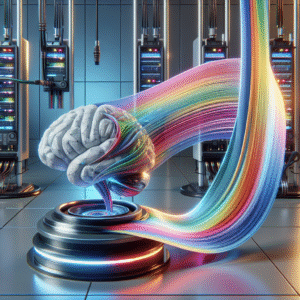Have you ever thought about how self-driving cars might change the way we think about road safety? It’s a fascinating topic that impacts not just car manufacturers and tech companies, but also every person who occupies the roads.
Understanding Autonomous Vehicles
Autonomous vehicles, or self-driving cars, are cars that can navigate and drive without human intervention. They use a combination of sensors, cameras, and artificial intelligence to interpret their environment. I find it amazing how much technology has advanced in recent years to enable this shift in transportation.
Levels of Autonomy
The Society of Automotive Engineers (SAE) has defined six levels of driving automation, from Level 0, where there is no automation, to Level 5, where the vehicle can handle all driving tasks under all conditions. This scale helps me understand the various features and capabilities present in autonomous vehicles.
| Level | Description |
|---|---|
| 0 | No automation: full human control |
| 1 | Driver assistance (e.g., cruise control) |
| 2 | Partial automation (e.g., lane keeping) |
| 3 | Conditional automation: vehicle can handle all tasks in specific conditions |
| 4 | High automation: vehicle can drive itself in most scenarios |
| 5 | Full automation: no human intervention needed |
How Autonomous Vehicles Work
These vehicles rely on extensive data collected through sensors like LiDAR, radar, and cameras. It amazes me that, through these technologies, cars can detect obstacles, understand road conditions, and make real-time decisions.
The algorithms used in autonomous vehicles analyze this data to make decisions similar to how a human driver would. I often wonder how complex the programming must be to ensure safety and efficiency.
The Promise of Enhanced Road Safety
Many proponents of autonomous vehicles argue that they can significantly improve road safety. With human errors being a leading cause of traffic accidents, the potential for self-driving cars to reduce these errors is an exciting prospect.
Reducing Human Error
Studies have shown that the majority of accidents on the road happen due to human error—things like distracted driving, fatigue, or poor decision-making. By reducing or eliminating the need for humans to drive, autonomous vehicles could lead to fewer accidents.
Improved Reaction Times
One of the advantages I see with autonomous vehicles is their ability to process information and react faster than humans. The sensors can register changes in the environment almost instantaneously, which may help prevent collisions that a human driver might miss.
Consistency in Driving Patterns
Autonomous vehicles can adhere to traffic laws and regulations meticulously. They are programmed to follow speed limits, stop at red lights, and yield the right of way. This consistency could lead to smoother traffic flow, reducing the likelihood of accidents caused by risky driving behaviors.
The Challenges to Overcome
Despite the promise of autonomous vehicles, there are significant challenges that must be addressed to ensure road safety.
Technical Limitations
While the technology behind self-driving cars is advancing rapidly, it is not infallible. There are situations, such as inclement weather or complex urban environments, where these vehicles might struggle to interpret data correctly.
Legal and Ethical Dilemmas
As self-driving cars become more prevalent, legal and ethical dilemmas arise. For example, how should an autonomous vehicle respond in unavoidable accident scenarios? Should it prioritize the safety of its passengers over pedestrians? These questions are crucial for setting up legal frameworks around autonomous vehicles.
Public Trust
Building public trust in autonomous vehicles is a significant hurdle. Many people feel uneasy about relinquishing control to a machine. For these technologies to be embraced, the public must see them as reliable and safe.
The Role of Data in Safety
Data is increasingly becoming the backbone of road safety as it relates to autonomous vehicles. I find it fascinating how real-time data can be collected to improve the performance and safety of these cars significantly.
Real-time Monitoring
These vehicles can continuously monitor their surroundings and share data with other vehicles and infrastructure, which can enhance decision-making. This connectivity can create a safer environment for all road users.
Learning from Incidents
In the event of a malfunction or accident, data from autonomous vehicles can provide critical information that could improve future designs and algorithms. By analyzing these incidents, engineers can better understand potential weaknesses and address them.
Current State of Regulation
Regulation plays a pivotal role in how autonomous vehicles are integrated into our traffic systems. It’s interesting to see how governments around the world are approaching this innovative technology.
Varying Legislative Approaches
Different countries and states have adopted various regulations regarding the testing and deployment of autonomous vehicles. For example, some areas have comprehensive frameworks, while others still grapple with the legal implications.
| Region | Regulation Status |
|---|---|
| USA | Various state laws, no federal standard yet |
| Europe | Stricter regulations and safety standards |
| Asia | Rapid adoption, emerging legal frameworks |
Insurance and Liability
As I think about the implications of self-driving cars, one significant issue is how liability will be determined in accidents. If an autonomous vehicle is involved in a crash, who is at fault—the manufacturer, the software developer, or the vehicle owner? Clear legal definitions are necessary to address these concerns.
The Future of Road Safety with Autonomous Vehicles
As I ponder the future, it seems clear that autonomous vehicles could transform road safety significantly. However, it’s worth considering what that future looks like.
Integration with Human Drivers
A hybrid approach, where autonomous vehicles share the road with human-driven cars, presents unique challenges. Effective communication between autonomous and human drivers is essential to ensure safety. I often wonder how this integration will play out, especially in busy urban environments.
Infrastructure Adaptation
For autonomous vehicles to operate safely and efficiently, infrastructure may need to adapt. This could involve smart traffic signals and updated road signage to communicate better with self-driving cars. It’s an exciting prospect—I imagine how smart cities might function with this technology integrated into their design.
Ongoing Education and Adaptation
Education on how autonomous vehicles work and their benefits will be vital for public acceptance. I envision community programs that inform citizens and provide insights into how these vehicles can enhance road safety.
Conclusion: A Road Ahead
In pondering the impact of autonomous vehicles on road safety, I’m filled with hope and curiosity. The potential for technology to reduce accidents caused by human error is particularly compelling. However, it’s vital that we address the challenges and questions surrounding this innovation.
I’m looking forward to watching how this technology unfolds and what it means for our future on the road. Ultimately, my belief is that a collaborative effort between technology developers, regulators, and the public can lead us to a safer and more efficient transportation system. The road ahead may be filled with questions, but it is also brimming with possibilities.






